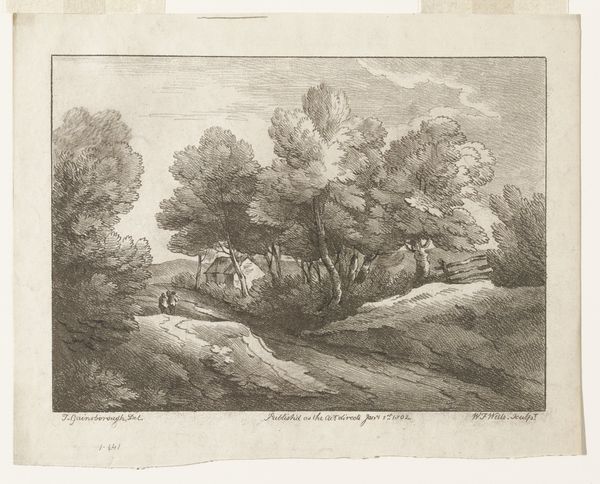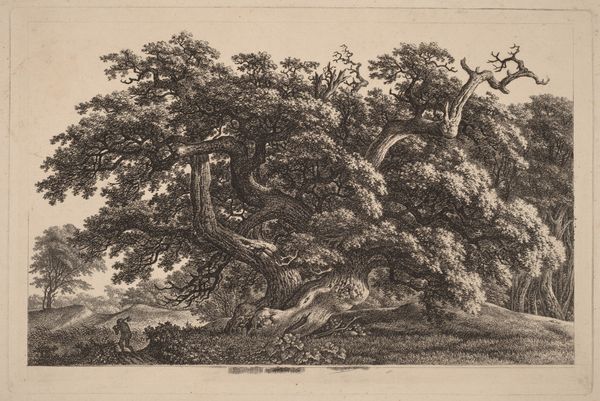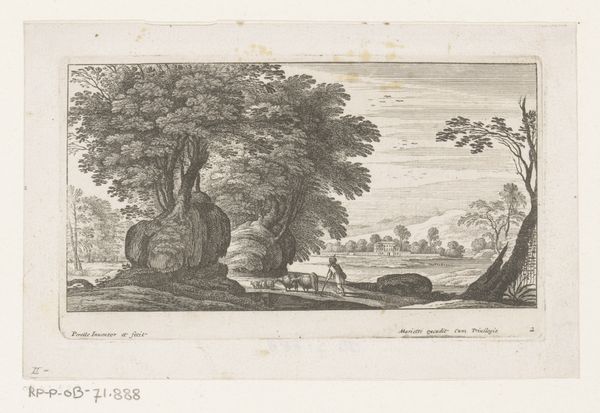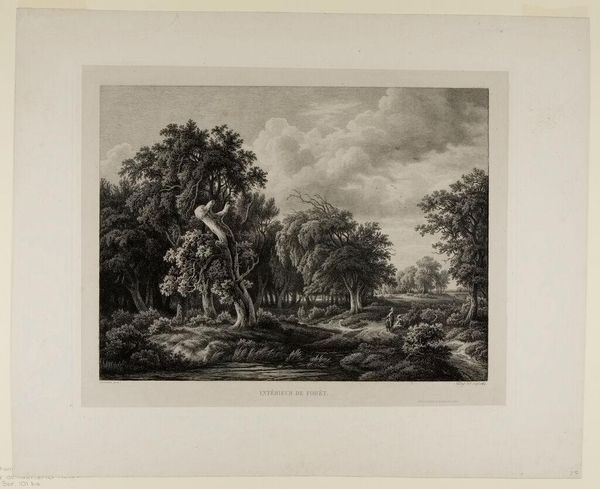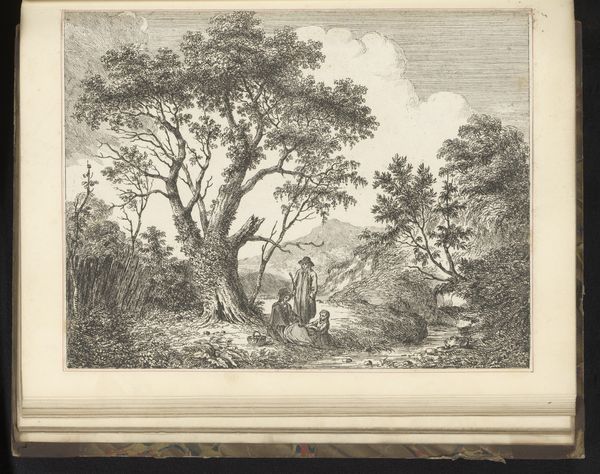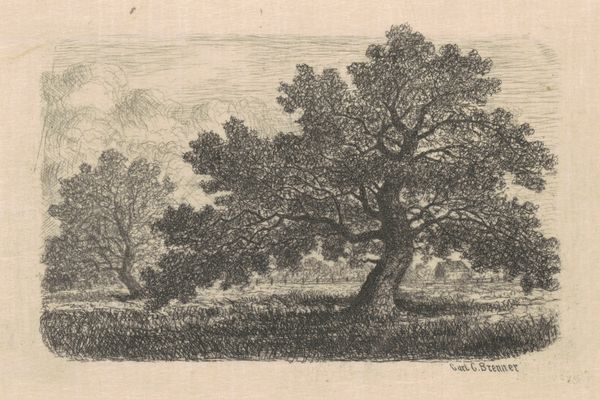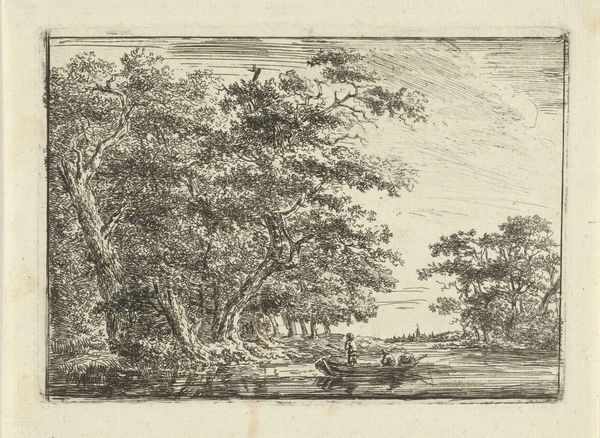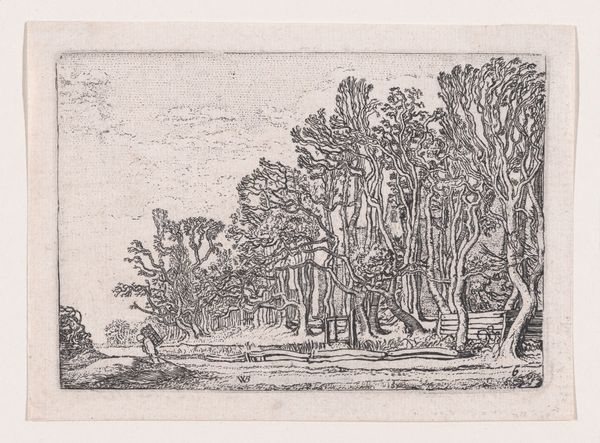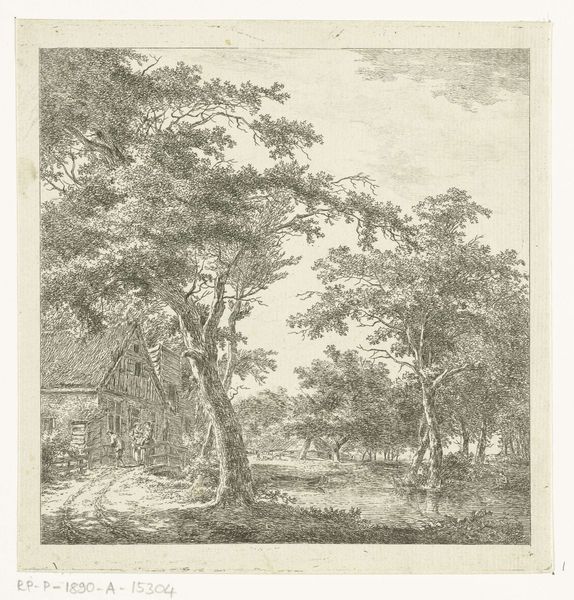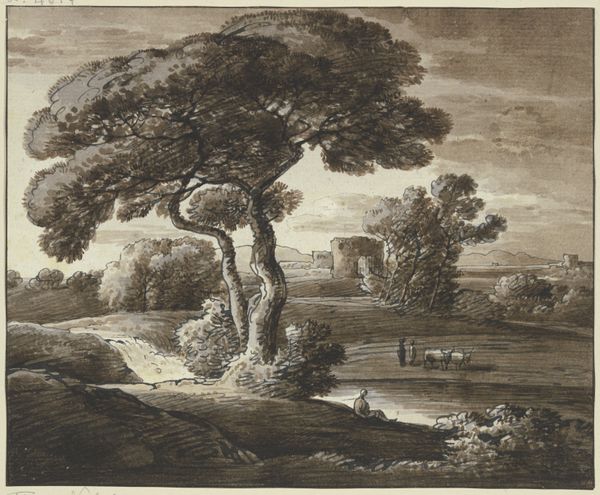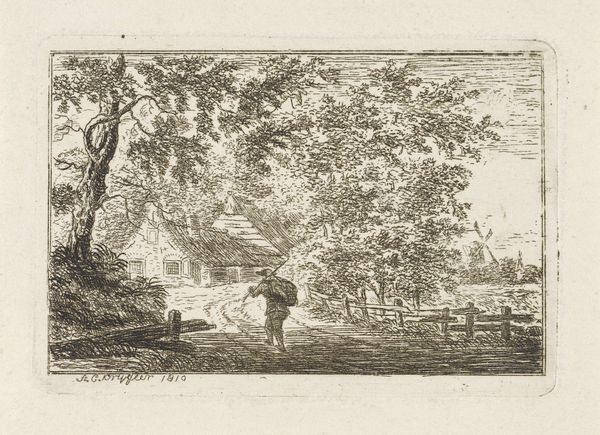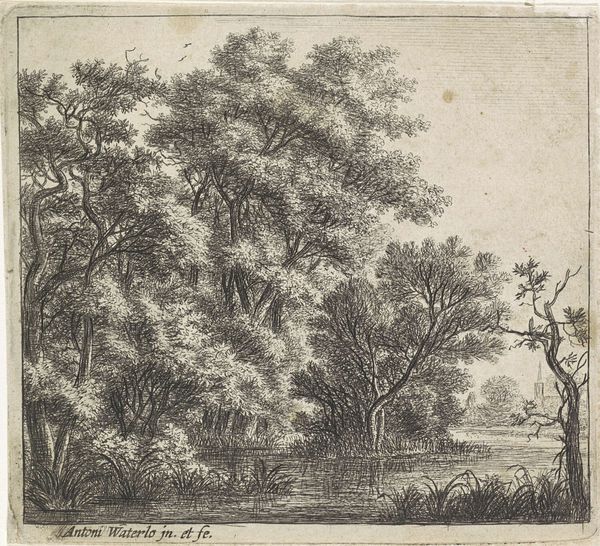
Dimensions: support: 320 x 446 mm
Copyright: CC-BY-NC-ND 4.0 DEED, Photo: Tate
Editor: This is Francis Towne's "Wood near Albano." I'm struck by how the monochrome wash emphasizes the textures, particularly of the twisting tree in the foreground. What can you tell me about the materials and process behind this work? Curator: The use of monochrome wash is indeed crucial. Consider the availability and cost of pigments at the time. A limited palette could reflect economic constraints on Towne's practice or a deliberate aesthetic choice linked to broader debates about artistic labor and the value of landscape. Editor: That's interesting, how economic constraints may have shaped artistic choices! Curator: Absolutely! Also, notice the paper itself. Was it locally sourced or imported? How does its quality impact the final image, and Towne's artistic choices? These are all material considerations. Editor: I'll keep that in mind, thanks! Curator: Remember that the means of production always shape the art.
Comments
Join the conversation
Join millions of artists and users on Artera today and experience the ultimate creative platform.
tate 4 months ago
⋮
The watercolours which Francis Towne made in Italy between 1780 and 1781, and in the Alps on his return to England, are usually regarded as amongst his finest. His practice was to make a pencil skech on the spot, add washes of monochrome or colour, then reinforce the pencil line in pen and ink - as if to emphasise the status of his drawings as sketches. The white of the paper in this watercolour brilliantly suggests the shafts of intense sunlight penentrating through the wooded glades at Albano, which is situated to the south-east of Rome. Towne may have known the watercolours made at Albano a few years earlier by his Devon acquaintance and friend John Downman (no.55). Gallery label, September 2004

